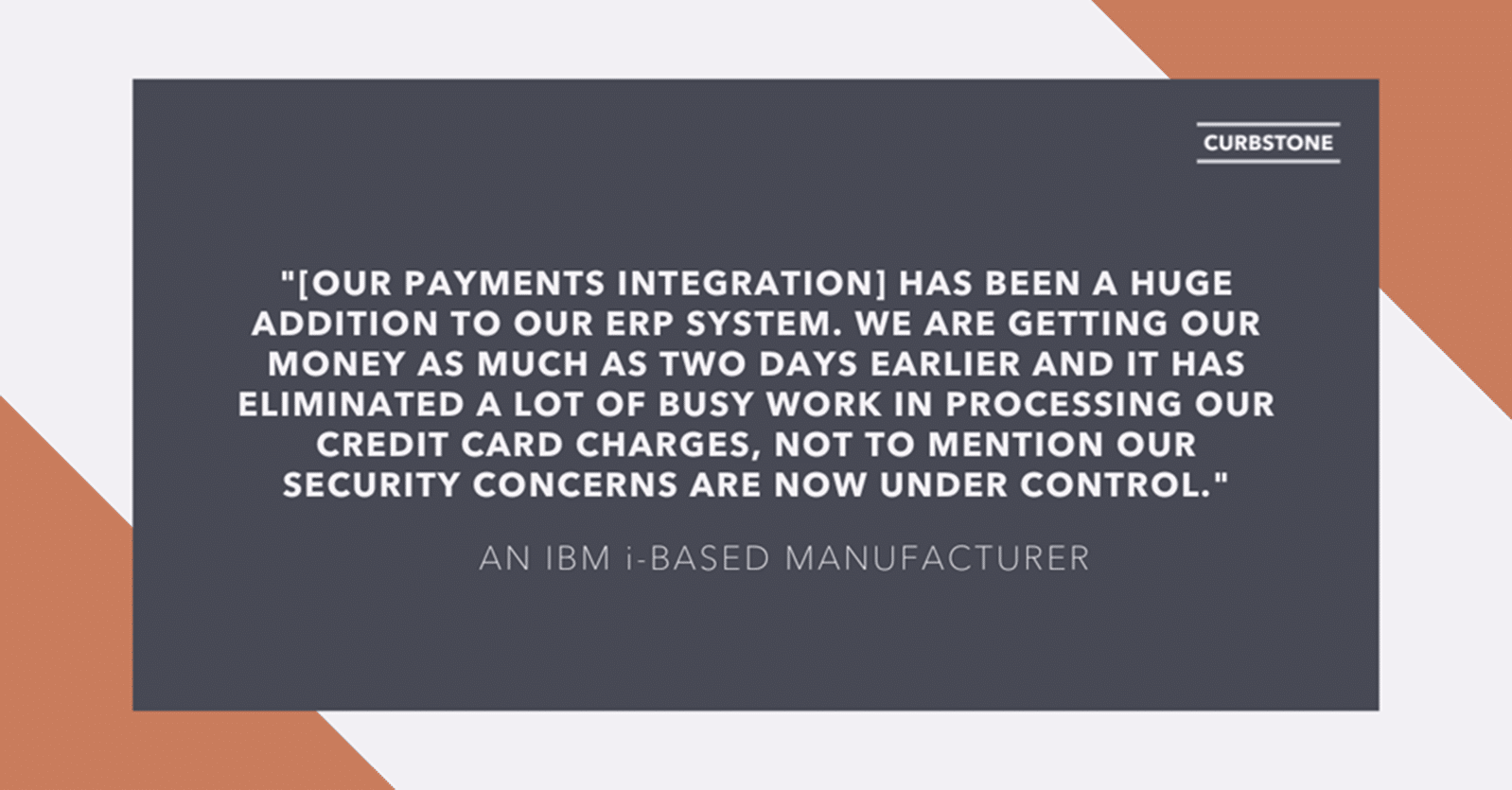As digital commerce evolves and security standards become tighter, companies running on the IBM i face increasing pressure to modernize their payment infrastructure. While the AS/400 is known for its reliability and longevity, its legacy systems weren’t necessarily built to handle the demands of a real-time, PCI-compliant, omnichannel payment landscape. Over time, companies have patchworked together a collection of systems that make payments possible – but not always practical.
Payment modernization, however, doesn’t require a migration away from the IBM i. In fact, many companies are doing the opposite: strategically integrating new technologies that make modern payment processing a reality on the IBM i. This allows these organizations to improve their day-to-day operations while extending the longevity of their existing core infrastructure. Some of the primary focus areas for these projects include:
Reducing Disconnected Systems
Most IBM i environments are decades in the making, prone to disconnected applications, manual workflows, and isolated databases. Payment modernization efforts should focus on eliminating unnecessary, outdated steps from day-to-day workflows.
For instance, disjointed reporting and reconciliation processes can be replaced with faster ones when accounting teams can access all their transaction data in one place. Settlement batches can be automated, leading to less manual effort and faster cash flow. Order entry teams can considerably speed up their work by executing transactions directly within their ERP, rather than pulling up an entirely separate payment application. Unlocking real-time data flow and eliminating redundant data entry allows the IBM i to stay at the center of a modern, unified tech stack.

Eliminating Data Storage
Merchants storing payment data on their own infrastructure is becoming an increasingly outdated concept. The security risks – and corresponding compliance requirements – are far too high to outweigh any potential benefits. Instead, more merchants are implementing solutions that pass payment data directly from the point of entry to the authorization network – avoiding their ERP, order entry system, and IBM i entirely. If a breach were to occur, the risk to the business is considerably lower.
Complying with the Latest PCI Compliance Laws
Whether a merchant uses a third-party solution or manages all of their payment operations in-house, merchants must complete an annual PCI self-assessment questionnaire (SAQ). Any part of their system that they use to store, process, or transmit credit card data is in scope for this SAQ. However, parts of their system that do not store, process, or transmit this data can be excluded from their reporting.
Merchants who use third-party service providers can rely on the provider’s own compliance efforts to satisfy some of their own requirements. Modern solutions that were specifically built to meet PCI compliance standards make this considerably easier.
Additionally, as these security standards evolve over time (as was the case with the introduction of PCI version 4.0 in 2024), the solution provider can take on the burden of ensuring compliance with the latest requirements. Merchants who don’t have a designated in-house security team can spend less time deciphering and adapting to ongoing changes, while remaining well-protected from the latest threats.
Switching from MagStripe to EMV Transactions
Even though it’s been several years since debit and credit card providers stopped issuing magnetic stripe cards, some merchants still process chip cards as swipe transactions – either because they haven’t upgraded their terminals to ones that can accept tap- or insertion-based methods, or because they haven’t revised their internal workflows. Modernizing a payment infrastructure to accommodate EMV transactions goes a long way in reducing liability and preventing chargebacks.
Accommodating Newer Digital Payment Methods
As customers become more comfortable using Apple Pay, Google Pay, and other contactless digital payment methods, merchants must find ways to accept these mobile options in addition to standard credit and debit cards. Not supporting these options may lead to higher levels of cart abandonment and lost revenue – especially in e-commerce environments. As savvy merchants modernize their payments infrastructure, accounting for ongoing shifts in consumer behavior becomes a critical focus.
Of course, all these changes don’t have to – nor should they – happen all at once. As with any successful modernization project, scalability and incrementality are key. Our recommendation? Start with a platform that can improve your current processes while maintaining your existing business logic, then gradually explore additional expansion as resources allow.
Start Your Payment Modernization Project with Curbstone
At Curbstone, we’ve helped hundreds of IBM i users modernize their payments infrastructure – whether that’s with EMV terminals at their retail counters, cards on file for more secure phone orders, convenient text-to-pay links, or flexible ecommerce solutions. Direct integration with the IBM i speeds up day-to-day workflows; consolidated transaction data eliminates silos for a more seamless environment. Deployment doesn’t interfere with day-to-day operations, meaning no temporary disruption in sales as users transition to a re-engineered system.
To see what faster, more modern payment processing might look like at your business, contact us today.

